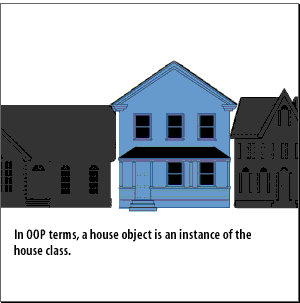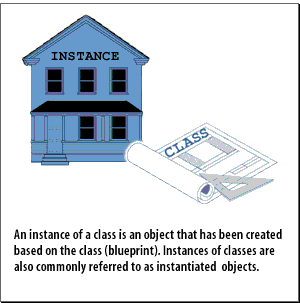Goals, Principles, and Patterns
As the name implies, the main "actors" in the object-oriented paradigm are called objects. Each object is an instance of a class and each class presents to the outside world a concise and consistent view of the objects that are instances of this class, without going into too much unnecessary detail or giving others access to the inner
workings of the objects. The class definition typically specifies the data fields, also known as instance variables, that an object contains, as well as the methods (operations) that an object can execute. This view of computing fulfill several goals and incorporates design principles, which we will discuss in this chapter.






Robustness
Every good programmer wants to develop software that is correct, which means that a program produces the right output for all the anticipated inputs in the program's application. In addition, we want software to be robust, that is, capable of handling unexpected inputs that are not explicitly defined for its application. For example, if a program is expecting a positive integer (perhaps representing the price of an item) and instead is given a negative integer, then the program should be able to recover gracefully from this error.
More importantly, in life-critical applications, where a software error can lead to injury or loss of life, software that is not robust could be deadly.
Therac-25, a radiation-therapy machine
This point was driven home in the late 1980s in accidents involving Therac-25, a radiation-therapy machine, which severely overdosed six patients between 1985 and 1987, some of whom died from complications resulting from
their radiation overdose. All six accidents were traced to software errors.
This machine was designed from the outset to use software based safety systems rather than hardware controls. The removal of these hardware safety measures had tragic consequences, as race conditions in the codebase led to the death of three patients, and caused debilitating injuries to at least three other patients.
The manufacturer (AECL) Atomic Energy of Canada Limited became the target of several lawsuits from families of the victims, and became subject to a Class I recall from the FDA, a situation which only happens if the agency believes there is significant risk of death or serious injury through continued use of a medical device.
This machine was designed from the outset to use software based safety systems rather than hardware controls. The removal of these hardware safety measures had tragic consequences, as race conditions in the codebase led to the death of three patients, and caused debilitating injuries to at least three other patients.
The manufacturer (AECL) Atomic Energy of Canada Limited became the target of several lawsuits from families of the victims, and became subject to a Class I recall from the FDA, a situation which only happens if the agency believes there is significant risk of death or serious injury through continued use of a medical device.